Thai Massage Techniques in Amsterdam: What to Expect and How to Prepare
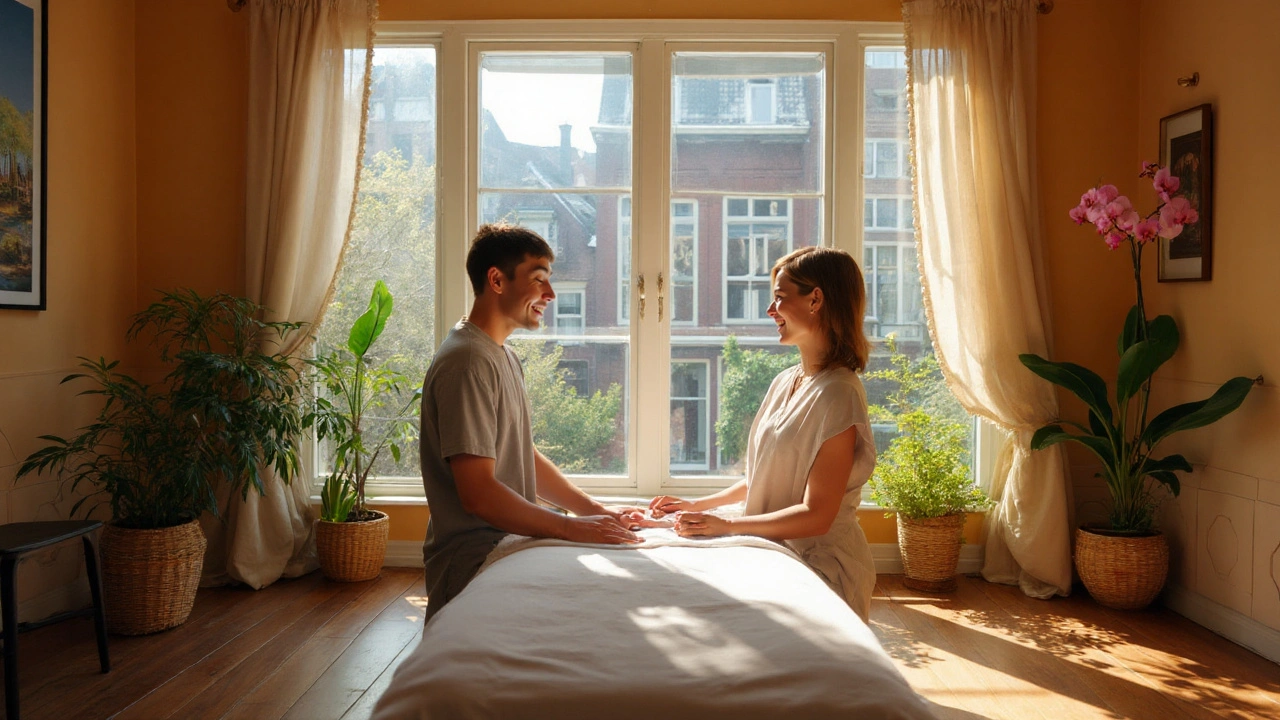
Ever walked by a Thai massage studio in Amsterdam and wondered if it’s more stretching or more spa day? Spoiler: it’s a bit of both, but so much more complex and fascinating than you probably imagine. You can walk in feeling stressed and sore, and float out with joints you didn’t know you had feeling loose, mentally lighter, and maybe even an inch taller. Think of it almost like assisted yoga—except you just relax and breathe while a skilled practitioner does all the work (and boy, is there a method to their magic!).
People come in with aching backs from too many hours hunched over laptops or with hamstrings knotted from cycling all over the city. Others are just curious about what’s behind those mysterious curtains and hoping for something deeper than your run-of-the-mill massage. Either way, the combination of pressure points, stretches, and guided movements can shake loose tension that’s been camping out in your muscles for years. Plus, the roots of Thai massage stretch back centuries—nobody keeps a practice alive that long unless it truly works.
In this guide, we’ll talk about the real nuts and bolts of Thai massage in Amsterdam: what actually happens in a session, how to prep, what styles you’ll find around the city, and tips to get the most from your visit. Grab a tea, settle in, and let’s demystify what goes on behind that peaceful music and herbal smell.
Thai Massage in Amsterdam: Definition, Origins, and Why People Swear by It
Okay, let’s clear up what Thai massage actually is—and isn’t. First off, it’s not oil-based and you don’t strip down to your underwear. Think comfortable, loose clothes (like soft pajamas), because you’ll be stretched, rotated, and moved in ways you might not expect from a classic massage table setup.
The practice itself traces back more than 2,500 years, with roots that mix Indian Ayurvedic principles, traditional Chinese medicine, and native Thai traditions. Buddhist monks originally practiced Thai massage—sometimes called Nuad Thai—mostly in temples for healing and spiritual development. That’s why sessions often start with a few moments of meditative silence or even a quick prayer by the practitioner.
Instead of smooth, sweeping motions or kneading deep into your back, Thai massage works along energy lines, called Sen. The therapist uses their thumbs, palms, elbows, knees, and even feet to apply rhythmic pressure along these lines. This pressure is alternated with gentle, yoga-like stretches—imagine someone helping you into a deep forward fold or gently rotating your shoulders until you hear a few satisfying pops.
Why do people keep coming back? There’s the obvious stuff: muscle tension melts, joints get their full range of motion back, and you feel more limber and awake. But plenty of folks swear by the mental perks too, like sharper focus, better sleep, and that post-massage clarity you can’t really get from a cup of coffee. Scientific reviews—even from the National Institutes of Health (NIH)—have shown Thai massage helps with chronic pain, stress, and even flexibility in elderly adults.
And let’s not forget its social legacy in Thailand: some annual festivals dedicate entire days to group Thai massage in outdoor markets. Here in Amsterdam, we mix tradition and modern health needs—you can find everything from basic temple-style sessions to luxe spa versions that add aromatherapy and hot herbal compresses for extra indulgence.
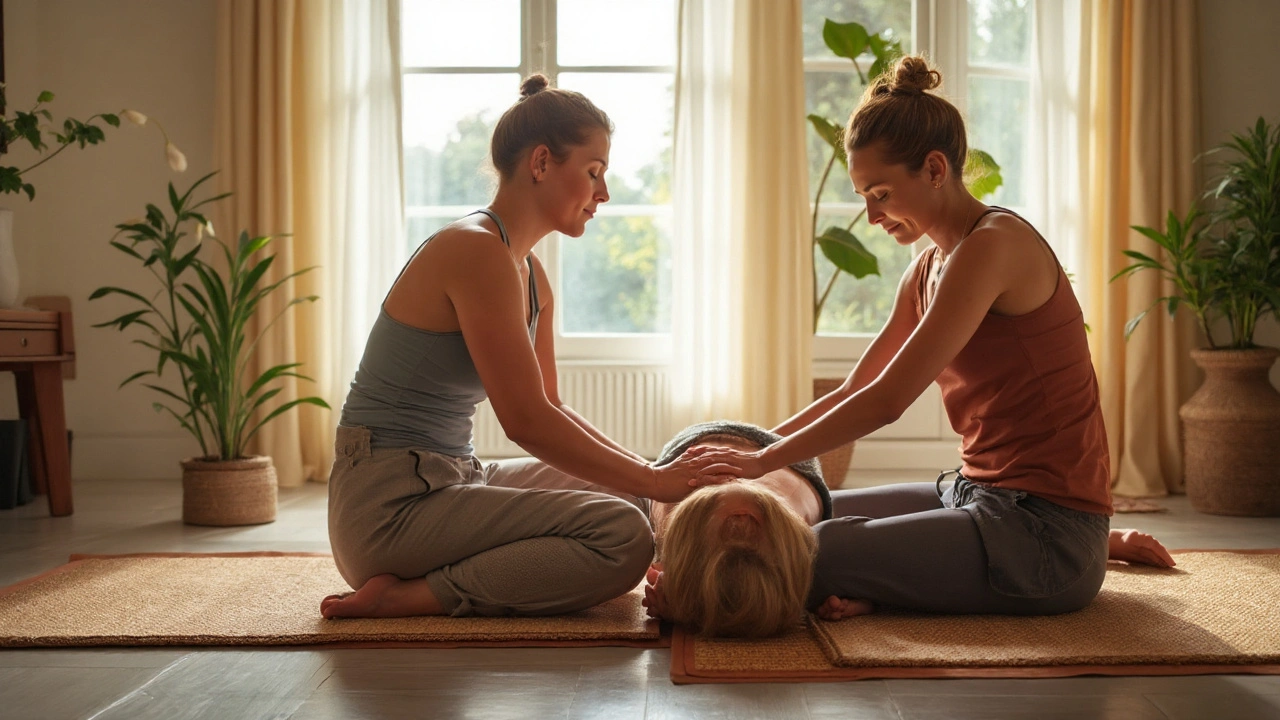
Exploring the Different Thai Massage Options and What Happens During a Session
Amsterdam’s packed with options when it comes to Thai massage. Are you after a straight-up, traditional session, or searching for a fusion with Western techniques (like Swedish kneading for stubborn neck knots)? There are dedicated Thai studios with certified therapists, luxe urban spas offering exotic treatments, and even a few small spots tucked near De Pijp, Oud-West, and Plantage for those in-the-know.
Let’s break down the main styles. The classic “Traditional Thai Massage” is usually performed on a comfy floor mat—no oils, just pressure, pulling, and stretching. It’s energizing; you won’t drift off as you might in a standard relaxation massage, but you’ll walk out feeling lighter. Then there’s Thai Oil Massage, more like a blend of the old techniques with the gliding, soothing touch of Western bodywork. If your muscles are battered from marathons or regular spinning classes, Sports Thai Massage can work wonders—here, the therapist tailors the stretches and pressure to target athletic soreness.
Some places in Amsterdam even specialize in Thai Foot Massage (great for tired commuters and cyclists), or unique treatments like Tok Sen—where a wooden hammer is gently tapped along the body to loosen up deep layers of muscle. Others layer on luxuries like herbal compresses, using heated bundles of healing Thai herbs to relax knots that even skilled hands can’t reach alone.
So what actually happens when you show up? Once you’re given fresh, clean clothes (often cotton, easy to move in), you’ll lie on a futon mat. The session usually starts at your feet and works upward, with the therapist using palms, elbows, knees, and sometimes feet to press, stretch, and mobilize your joints. Expect to be gently rocked, pulled, twisted, and pumped—often following a set routine but tweaked for your particular aches and needs. Don’t freak out if they climb on the mat, use their body weight to stretch you, or ask for your help with deep breathing during a big stretch. You’re always in control—good therapists will ask about pressure, flexibility limits, and check in on comfort. If anything feels sharp or wrong, always let them know.
Sessions can last from an intense 30 minutes for a quick fix, all the way up to two-hour deep dives for total restoration. Many people feel an immediate energy boost or sense of “floating” after. If you’re a little sore the next day, it usually means the stretching got to those hard-to-reach spots you never knew needed help.
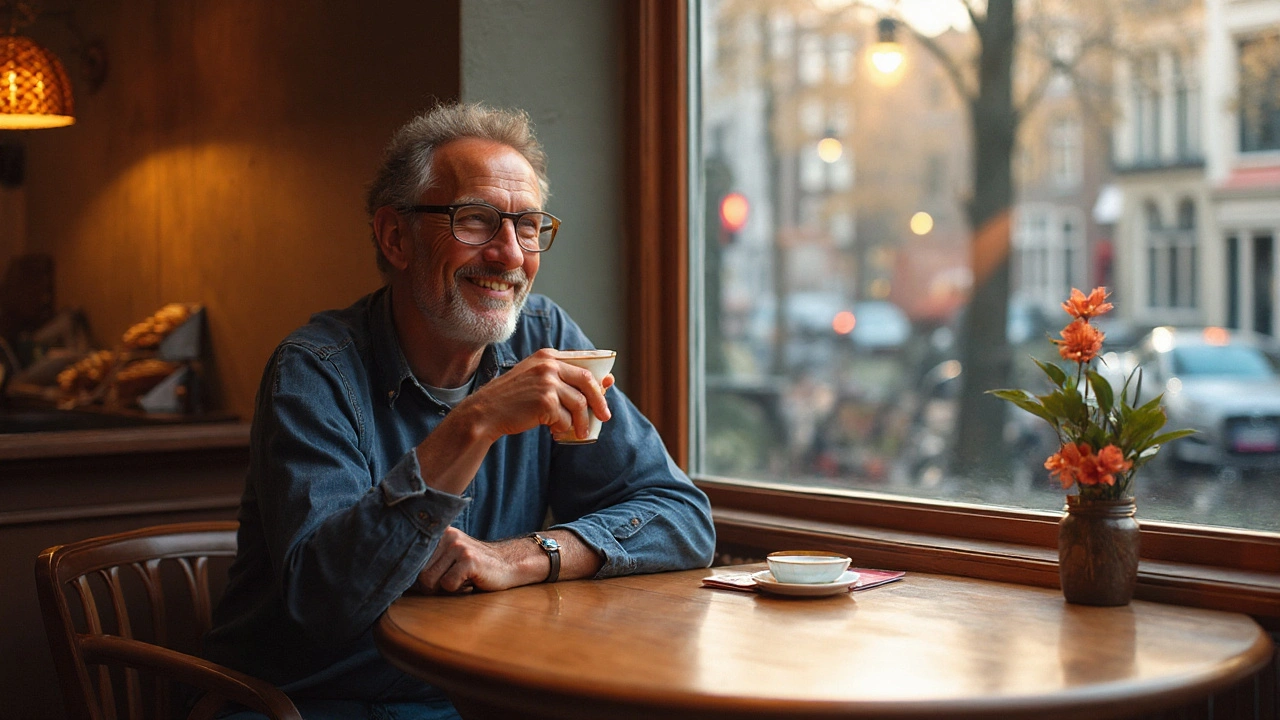
Preparing, Booking, and Making the Most of Your Amsterdam Thai Massage Experience
If you’re ready to book, here are some real-world tips. Start by checking online reviews and certifications. Lots of legit Amsterdam studios display their practitioners’ Thai certificates on the wall, and most reputable spots train their staff in Thailand itself. Stick with places that have positive word-of-mouth for hygiene; it’s a non-negotiable in 2025. If you can, ask for a therapist who matches your comfort level: some prefer working gently, while others are known for a more “no pain, no gain” approach.
Prices in Amsterdam vary widely: a standard one-hour Thai massage usually runs €55–€90, depending on location, extras, and therapist experience. Trendy neighborhoods like De 9 Straatjes or Oud-Zuid tend to charge more, but hidden gems in less touristy areas sometimes offer fantastic work at friendlier prices. Many studios now make booking super easy—either online, via app, or by a quick phone call. A deposit is normal for prime weekend slots.
Now, how should you prep? Don’t eat a big meal right before—stretching with a full stomach isn’t comfy. Wear (or bring) comfy, stretchy clothes, though most places supply them anyway. Arrive five to ten minutes early to chill, fill in any forms, and go over health basics (like joint injuries or if you’re pregnant—always flag this for safety, as Thai massage for pregnant women is a whole different protocol). Turn your phone off and take a few deep breaths while you wait—it’ll help you get out of “work mode” and into “self-care mode.”
During the session, speak up if the pressure’s too much or you want focus on a certain area. If you want the deep work but don’t want to feel too vulnerable, request a female or male therapist—Amsterdam is all about personal comfort. Afterward, drink plenty of water to flush those loosened-up toxins, and don’t plan a marathon bike ride home—sometimes your body needs a bit of time to adjust to its new, looser groove.
- Thai massage Amsterdam offers real relief for both body and mind, but every session’s unique based on your needs and the therapist’s skill.
- If it’s your first time, mention it while booking—they’ll guide you through with extra care and pointers.
- And if you become a regular, most studios offer loyalty cards or package deals for serious savings.
Quick reality check: you don’t need to be super flexible or spiritual to benefit. Plenty of regulars are just tired folks from all walks of life wanting less pain and a better mood. Still nervous? Visit the studio in person and check out their vibe; trust your gut about feeling safe and cared for. And if you’re still just dabbling, check local wellness sites for try-out deals or group workshop days.
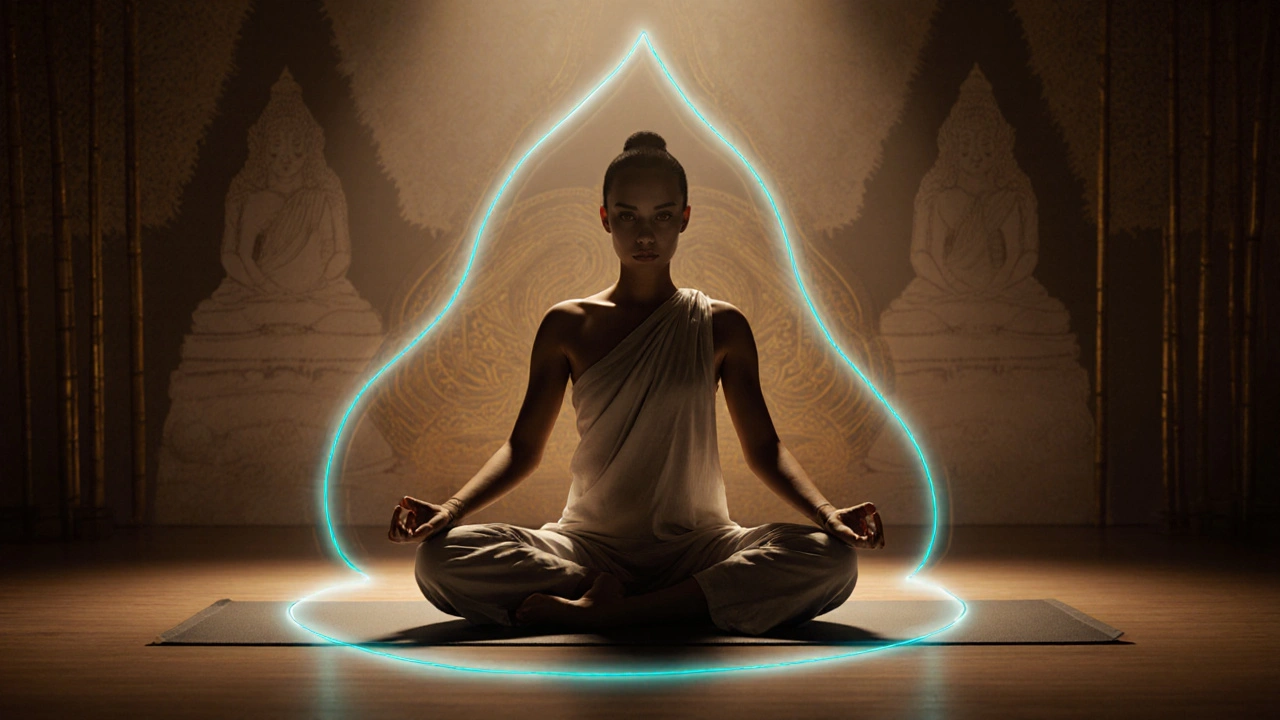
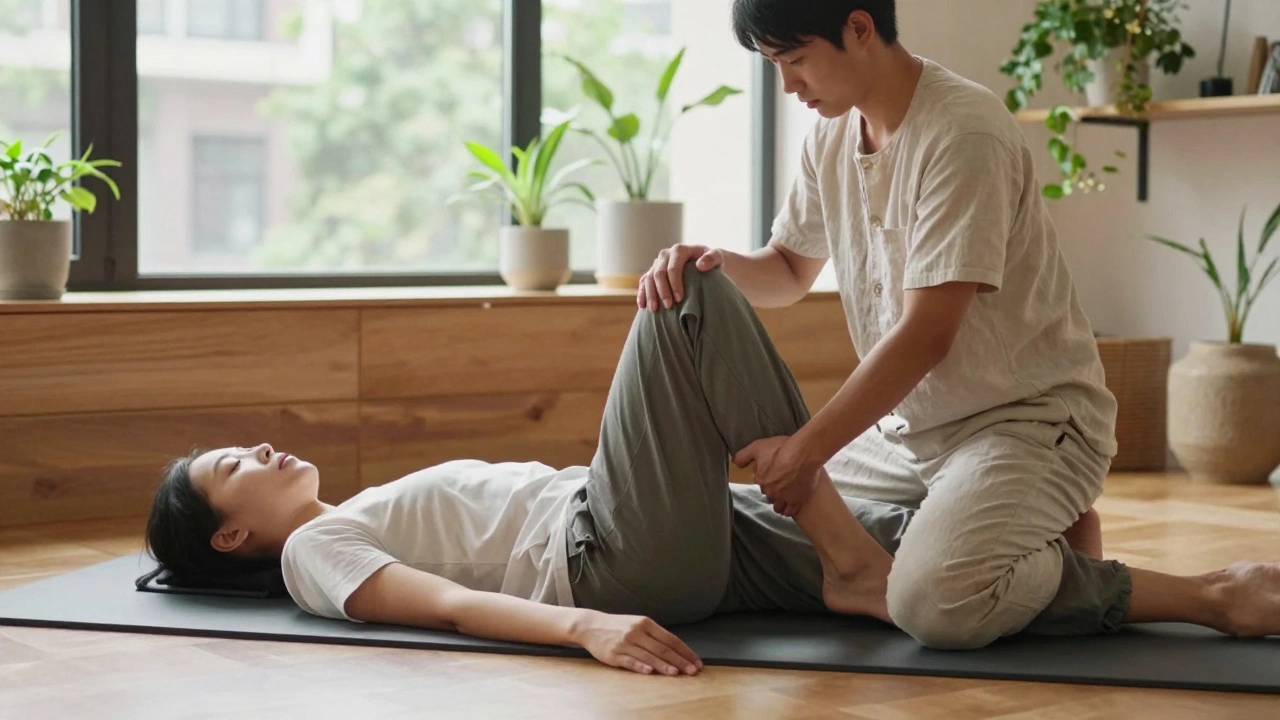
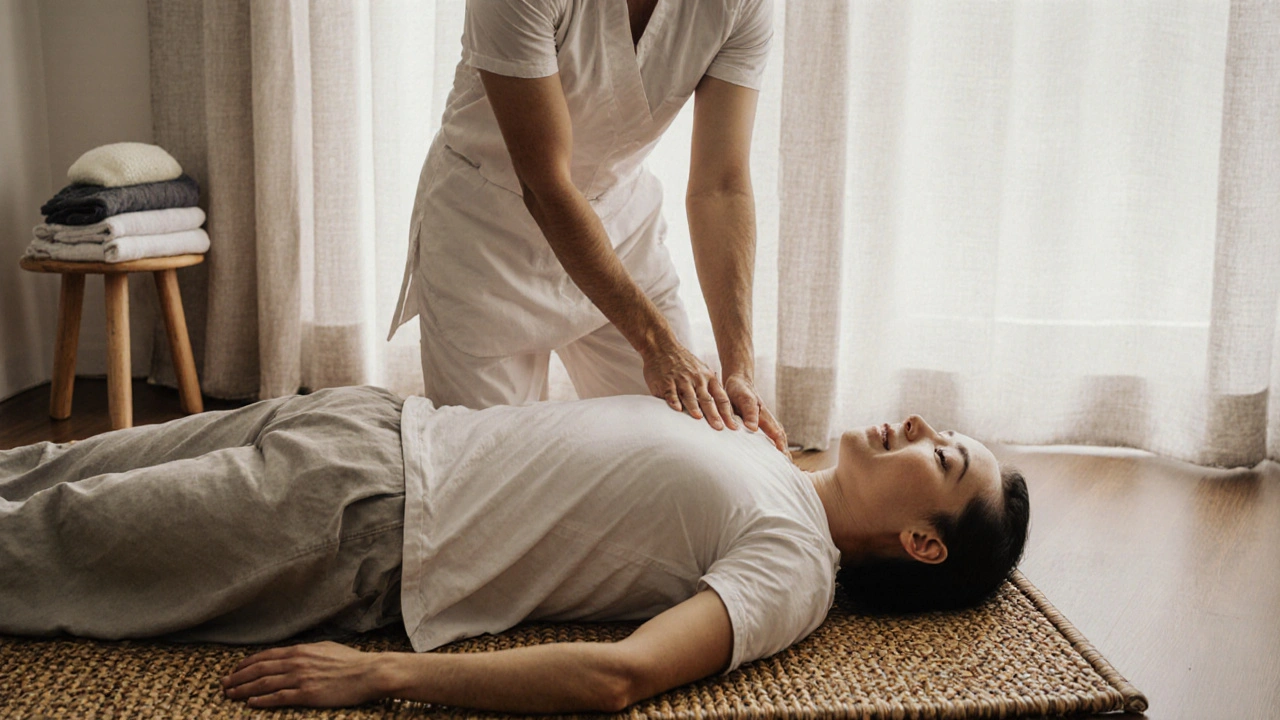
LeeAnne Brandt
August 6, 2025 AT 15:37I've had a chance to experience Thai massage in Amsterdam a few times, and honestly, it’s quite different from your typical Western massage experience. The techniques are much more dynamic, involving stretches and pressure points which might catch some first-timers off guard but definitely work wonders.
Preparation-wise, they usually recommend wearing comfortable, loose clothing rather than going in fully undressed like a traditional spa massage. That made me feel a lot more relaxed and less exposed. The atmosphere is generally calming, with some soft music and a tranquil setting, so your nerves can settle pretty quickly.
One thing I found especially interesting is how the masseuse incorporates elements of yoga stretching into the session, so it’s almost like a guided flexibility routine. It can be a bit intense but leaves you feeling deeply relaxed afterwards.
I've noticed that communicating your pain threshold during the massage is important because the pressure can vary quite a bit from light to firm.
Overall, it’s a rejuvenating experience. Definitely recommend trying it at least once if you're curious about holistic wellness approaches!
Lynn Ma
August 6, 2025 AT 15:52Oh my gosh, yes! The first time I got a Thai massage in Amsterdam I was NOT prepared for that blend of serious muscle work and stretching. It's like having your body bent and pushed into shapes you didn’t know were possible — but in a good way, surprisingly! The therapists are some kind of wizard artists, really.
Honestly, it’s not just a massage; it’s an adventurous journey through your muscles. They get deep into those hidden spots that you’ve been neglecting for ages. I definitely suggest drinking lots of water afterward because you will feel this purifying detox sensation.
One tip for newbies: don’t wear tight clothes. Loose ones are your best friend, and be prepared to kinda look like a noodle who’s been twisted and stretched by a friendly octopus. Also, I learned that sessions can vary—some places use oils, some stick to dry techniques, so check out what you want beforehand!
Would I go back? In a heartbeat.
siva kumar
August 7, 2025 AT 20:06As someone deeply passionate about traditional body therapies, I must emphasize that authentic Thai massage incorporates principles that are ancient and profound, far beyond mere relaxation. In Amsterdam, where you can find a diverse range of practitioners, it’s essential to seek those who respect these traditional values and techniques to get the full benefits.
The integration of yoga-like stretches alongside finger and palm pressure stimulates the body's energy lines, or 'Sen' lines, which is a concept deeply rooted in Thai healing philosophies. Before your session, it’s advisable to be open-minded and mentally prepared, understanding this is more than a simple massage—it's a therapeutic art form.
Also, from my experience, clear communication with your therapist is crucial to tailor the intensity appropriately, especially if you have any physical concerns. After the session, the subtle balance of relaxation and invigorating energy you feel is remarkable, often lasting several days.
If you're in Amsterdam, try to explore options with certified therapists who truly understand these techniques. It will transform your perception of the therapy altogether.
Jess Felty
August 7, 2025 AT 23:13Honestly, I'm always suspicious about these so-called 'authentic' Thai massages popping up everywhere in places like Amsterdam. How do we even know the therapists are actually certified or following proper traditional methods? I bet a good portion of these places just slap on the label without any real tradition behind it.
Plus, have you noticed how massage places are sometimes fronts for sketchy activities? You gotta watch out and be super cautious about where you go, especially in a tourist-heavy city.
On the technique side, sure, stretching and pressure point stuff sounds legit, but without solid credentials or transparency, it’s too easy to get scammed or even risk injury. I’d rather be safe and do a lot of background checks before I trust anyone with my body like that.
Just my two cents, but don't blindly trust everything with pretty promises.
Kathy ROBLIN
August 9, 2025 AT 02:40Wow, my experience with Thai massage has been borderline theatrical every time, in the best and worst ways! Like, one minute it’s bliss, and the next I'm kind of screaming inwardly because the stretches get insane. It’s a rollercoaster, truly.
Amsterdam’s vibe adds to it—there's something so eclectic and intense about the atmosphere in these massage parlors that sometimes I felt like the session was this whole dramatic performance. Can't tell if I was getting a massage or starring in a soap opera.
But for real, the level of physical engagement changes the game. It’s not passive like a regular massage. Your therapist gets in there and gets their hands (and sometimes feet!) all over you like a tiny theatre of bodily contortions. The aftermath? Purely euphoric, if you survive the process.
If you’re sensitive or dramatic like me, be prepared for the emotional ride!
satish gottikere shivaraju
August 10, 2025 AT 06:26Hey, just dropping by to say that Thai massage can be a beautiful addition to your wellness routine. After my trips to Amsterdam, I found the holistic approach really aligns with both physical and mental balance.
One cool thing I want to mention is how they emphasize the balance of energy flow through the body, which really helps with stress relief. I always leave these sessions feeling rejuvenated and with a lighter headspace. 😊
Also, the therapists are generally super thoughtful, adapting pressure and stretches to my level of comfort, making sure it’s a healing process and not painful.
Remember to arrive early so you can really unwind before the session starts. It makes a big difference in maximizing the benefits. Give it a go and let your body thank you!
Abraham Pisico
August 23, 2025 AT 00:00Ah, the delightful circus of Thai massages in Amsterdam, where ancient tradition meets the liberal arts of urban wellness! Honestly, it's the only place where I can get manhandled, stretched like dough, and left feeling like a rejuvenated pretzel. It’s like you pay to be twisted, stretched, and poked, then sent out like a new human.
And yes, it's intense, almost like a performance art piece where your body is both the canvas and the sculpture. But don't worry, the therapists are fierce but fabulous, and your muscles end up singing praise even if you feel like a noodle after.
There’s a strange charm in how discomfort and relief are so intertwined here. Truly a theatrical experience for the body and soul. Bring an open mind, a sense of humor, and prepare to be both challenged and pampered.
Tarapada Jana
August 24, 2025 AT 03:46I must admit, while the growing popularity of Thai massage in places like Amsterdam is intriguing, it's crucial to maintain a critical perspective on how these traditions are presented and commercialized. Authenticity matters, and with wellness tourism booming, there is a real risk of dilution of this ancient practice.
One must approach the experience with a firm understanding of its cultural divestment as well. It's more than just therapeutic; it's embedded within a philosophical and spiritual framework that is often lost in translation abroad.
If you seek the full benefit, I urge you to research your practitioner meticulously and seek educational resources that respect the tradition’s roots. Otherwise, the massage might end up as a superficial indulgence rather than a transformative therapy.
Lippard Babette
August 29, 2025 AT 22:40Just wanted to share my take! I've tried Thai massage in Amsterdam a couple of times too, and it’s definitely something I look forward to when I visit. The sessions felt very respectful and catered to my comfort, which made the stretch and pressure points surprisingly enjoyable.
It's a nice balance of being therapeutic but also relaxing. I found that taking a warm shower afterward really helps to amplify the benefits, and drinking herbal tea calms the body even more.
If you’re nervous, communicate your feelings with your therapist—they are usually very understanding and want you to have a good experience. All in all, it’s a great way to reset from the hustle and bustle.
Would love to hear about everyone else’s favorite spots in Amsterdam for this!
Srimon Meka
September 4, 2025 AT 17:33From my perspective as someone who believes in the power of mindful physical care, Thai massage is not just about rubbing out tension; it’s an intellectual understanding of how the body moves and feels. In Amsterdam, the practitioners do a fine job at delivering thoughtful, intentional sessions that blend strength with gentleness.
Preparing mentally before your session is a game-changer. Arriving with an open mind and readiness to communicate makes all the difference. These therapists don’t just work your muscles—they educate you on your body’s needs.
After the session, the release of built-up stress is palpable and often lasting. It’s an essential part of self-care I highly encourage people to explore, especially in fast-paced cities where stress accumulates quickly.
Don't hesitate to ask questions and learn about the techniques—they're usually happy to share knowledge if you show interest.